Effect of plasma treatment on the seed germination and seedling growth of radish(Raphanus sativus)
Rajesh Prakash GURAGAIN, Hom Bahadur BANIYA,Santosh DHUNGANA, Ganesh Kuwar CHHETRI, Binita SEDHAI,Niroj BASNET, Aavash SHAKYA, Bishnu Prasad PANDEY,Suman Prakash PRADHAN, Ujjwal Man JOSHI and Deepak Prasad SUBEDI
1 Department of Physics, School of Sciences, Kathmandu University, Dhulikhel, Kavre 45210, Nepal
2 Department of Physics, Tri-Chandra Multiple Campus, Tribhuvan University, Kathmandu 44600, Nepal
3 Department of Chemical Science and Engineering, Kathmandu University, Dhulikhel, Kavre 45210,Nepal
4 Department of Environmental Science and Engineering,Kathmandu University,Dhulikhel,Kavre 45210,Nepal
Abstract The effect on the germination and seedling growth of radish(Raphanus sativus)seeds were examined employing a dielectric barrier discharge (DBD) at atmospheric pressure and room temperature for various treatment time.DBD plasma using argon gas of flow rate 2 l m−1 was employed in this study.Radish seeds were treated with DBD plasma for 1–5 min, respectively.Germination characteristics,seedling growth parameters,the contact angle of the seed coat,water uptake capacity,mass loss,the temperature of the seeds,chlorophyll,and carotenoid contents of the seedlings were measured before and after the DBD plasma treatments.Plasma treatment of radish seeds significantly increased germination-related characters, including germination percentage, fresh and dry weight, vigor index,and total carotenoids contents.However,the cumulative production rate was found to be decreased.Results from the experiment indicate an acceleration in the water uptake of the radish seeds and make the seed surface hydrophilic by plasma treatment.Scanning electron microscopy analysis showed that etching effects on the seed coat occurred after the argon plasma treatments, which affected the wettability of the radish seed.The experimental findings showed that seeds being treated by DBD plasma for 2 and 3 min had a positive effect on the germination and seedling growth of radish.
Keywords: dielectric barrier discharge (DBD), electron temperature, electron density,germination, growth parameters, radish seeds
1.Introduction
Plasma has been widely applied to different areas, including semiconductor, optics, photonics, manufacturing, medicine,cosmetics, agriculture, and waste treatment [1–10].Plasma farming, which has contributed to produce safe agricultural products and increase the income of rural households, has been in the spotlight.Different research has been carried out in plasma farming, as part of an effort to provide safe and healthy food to the public [11–13].Moreover, plasma can maximize the sterilizing effect and get rid of the pesticide residue from agricultural products [14–17].A bubble plasma machine, which can clean the surface with bubbles, can decompose about 90% of pesticides when operating the machine for about 3 min and it also provides an enhanced sterilizing effect [18].Another experiment, which can speed up the germination and growth process of seeds by using plasma, has been carried out.The seeds, which have grown through the plasma-based water treatment,have bigger leaves and stems as well as they have about two times a faster rate of growth [19].Innovative plasma farming technologies have been commercialized and they have contributed to storing agricultural products more effectively.Due to the lack of storage facilities, farmers are compelled to throw out agricultural products in garbage.However, after installing the plasma equipment,products can be stored for a long period of time, without any problems.When we investigate plasma farming, the convenience of farmers has been increased as it has brought innovation to the agricultural and food industries.
Cold plasma is an efficient, economical, and clean method to improve seed performance and crop yield[20].The United Nations Food and Agriculture Organization(FAO)has stated that worldwide food scarcity is likely to increase by three times more because of climate change [21, 22].The technology used in this project is based on plasma.This project aims to present atmospheric and low-pressure nonthermal plasma to reduce germination time and enhance the yield of different seeds, mainly cash crop seeds.Plasma exposure time is the significant parameter to be studied during this study.Plasma interaction with seed changes their surface properties and introduces functional groups on their layers[23, 24].For that, technology is one of the major aspects on which the farmers depend on.Many specific attributes of technology include value, clarity, profit, return, etc.
Plasma treatment in agricultural goods is not a new topic in developed countries.But in the context of developing countries like Nepal, where most people follow the traditional method of agriculture, it can be a new scientific way to optimize the germination time of seedlings and the yield of the crops.The primary production includes crops,vegetables, and fruits.This can be helpful to the farmer to gain more benefits.Knowledge of Agro-economy, soil quality, irrigation, harvesting, and marketing are essential pre-conditions for farmers to go along with a new variety of crops in the field.Here, credit and necessary inputs are also pre-condition.Agriculture in Nepal is always risky, and therefore if we try to change something, it becomes more harmful.Because of this, the farmer tries to stick with traditional agriculture.In the present study, we studied the effect of plasma treatment on the seed germination and seedling growth of radish.Radish (Raphanus sativus) is a root vegetable grown and consumed all over the world and is considered part of the human diet, even though it is not common among some populations.Usually, people eat radishes raw as a crunchy vegetable, mainly in a salad[25].
‘Plasma agriculture’ is a newly emerging research area with the vast potential of application in countries that heavily rely on agriculture.It is also a challenging field of study which has been associated with various opportunities too.In an international context, this is ongoing research with many positive results.Even though it has already made an enormous impact on agriculture, we expect the competition to be low since it is a new topic of interest in physics.Implementation of plasma-treated seeds for agriculture purposes increases crops yields without the use of harmful pesticides.From various previous research, we realized that germination time is increased by up to 25%,which will benefit the farmers directly [26,27].The experiment by Zahoranová, Šerá, Šerý,and their team in maize seed,black pine,wheat grains and by various research on peas,tomatoes showed a high increase in the germination percentage and seeding length after plasma treatment [6, 23, 24, 28–30].Similarly, the experiment done in rapeseed and Herbaceous plant using dielectric barrier discharge (DBD) plasma source shows improved seed viability in rapeseed and enhanced permeability of seed in Herbaceous plants [20, 31, 32].Similar to our research, an experiment was done by Hayashi et al on radish sprout using an atmospheric pressure plasma torch.In his work,they found an improvement in the germination and lengths of the stem and root of plants after seeding [33].It has also been suggested that introduction of small amount of argon, nitrogen,helium gas in the discharge results in a more homogenous treatment of seeds resulting in improved germination[28–30,34].The current research suggests inventing a new technology based on 50 Hz frequency DBD reactors used for the treatment of seeds of radish.
2.Experimental section
The typical laboratory arrangement and image of the discharge used in the present study are shown in figures 1(a)and(b).The entire reactor system is fixed on a movable table.The reactor consists of a transparent polycarbonate cylinder of height 10 cm, diameter 10 cm, and 0.5 cm thickness.An orifice was made on the cylinder and a fiber optic cable was inserted and sealed.The fiber optic helps to collect the signal from the discharge and send it to an optical emission spectrometer.Both the upper and bottom electrodes are made of brass (5.1 cm × 5.1 cm × 1.0 cm).A polycarbonate (PC)sheet of 2 mm thickness was inserted between the two electrodes which serve as the dielectric barrier.The inter-electrode separation was maintained at 3.5 mm for all treatments.PINTEX HVP-28HF,having attenuation ratio of 1000:1,was employed to estimate the discharge voltage.Oscilloscope probe (Siglent PB470 70 MHz; 10:1) was fed across 10 kΩ shunt resistor for current estimation.
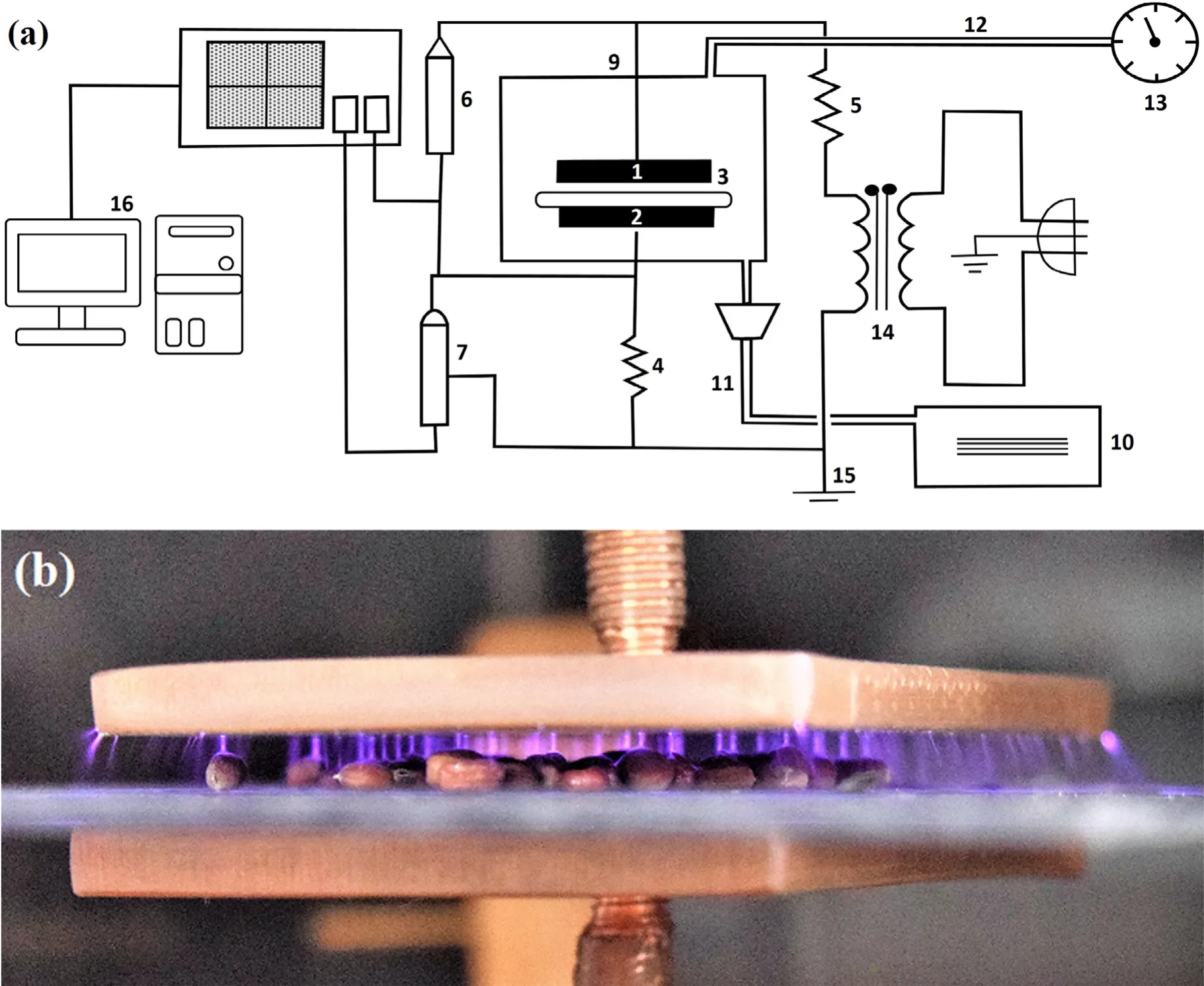
Figure 1.(a)Schematic of the experimental system(1 and 2:electrodes,3:dielectric sheet(PC),4:ballast resistor,5:shunt resistor,6:high voltage probe,7:oscilloscope probe,8:oscilloscope,9:reaction chamber,10:vacuum pump,11 and 12:pipes,13:pressure gauge,14:high voltage transformer, 15: ground, 16: computer interface).(b) Image of the discharge.
The current and voltage waveforms were monitored and analyzed using a digital oscilloscope (Tektronix TDS 2002,60 MHz).A spectrometer from Ocean Optics, Inc.(USB 2000+)was used for the measurement of emission spectra.In this work, a high voltage ac supply of 11.32 kV (r.m.s)operating at 50 Hz was used.Argon gas of flow rate 2 l min−1was used as a carrier gas.One-hundred radish seeds were placed in the active plasma region on the dielectric barrier and mechanically moved to ensure uniform treatment.During the experiments, seeds were treated with plasma, exposure times ranged from 1 to 5 min.After treatment,seeds were preserved in sterilized vessels until biological experiments like seed water contact angle measurement, seed temperature measurement, electrical conductivity (EC) determination, mass loss estimation, and Scanning electron microscopy (SEM)analysis of the seed started.
3.Growing conditions
Before sowing,a cocopeat was taken and washed with deionized water.Then it was dried at ambient temperature.After that, a germination tray(pot)having two compartments was taken,and the upper region of the tray(pot)was filled with cocopeat.About 300 ml of water was kept in the lower compartment of each tray and a self-irrigation system was maintained on each tray through capillary action.Three replicates of 16 radish seeds were sown in each tray(pot)and the germination parameters were studied on the 4th, 6th, and 8th day of germination.The images of seedlings of radish on various days are shown in figure 2.
4.Results and discussion
4.1.Electrical signal analysis
Figure 3 shows the typical current and voltage waveforms of the discharge.From figure 3, it is evident that, the current waveform consists of narrow current filaments with very short lifetimes indicating the ‘filamentary streamer-based microdischarge regime’ of DBD.The existence of ‘filamentary micro-discharge’ is characteristic feature of atmospheric pressure DBD [35].
Lissajous figures are the charge Q(t)–applied voltage V(t)plots, during one period of the applied voltage.The energy dissipated per cycle and the average power dissipated can be calculated by using Lissajous figures[36,37].Figure 4 shows a typical Lissajous figure.
For volume discharge, the capacitance of the dielectricair combinationCis given by [38, 39]:

whereCg= capacitance of air space andCd= capacitance of dielectric.

Figure 2.Images of radish seedlings on various days.
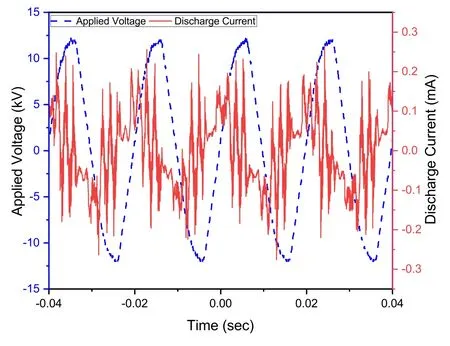
Figure 3.Current–voltage (I–V) waveform of DBD generated at atmospheric pressure.
The energy dissipated per cycle E is given by [40]:

and the average power dissipated is given by [40, 41]:

whereVminis the minimum amount of applied voltage necessary to ignite the discharge,Vmaxis the maximum value of applied voltage and f is the frequency of input voltage.
From the Lissajous figure,the energy dissipated per cycle is found to be 2.66 mJ and the average power dissipated(P)is 133.02 mW.We also came to know that insertion of seeds in the air gap changes the power and energy consumption.
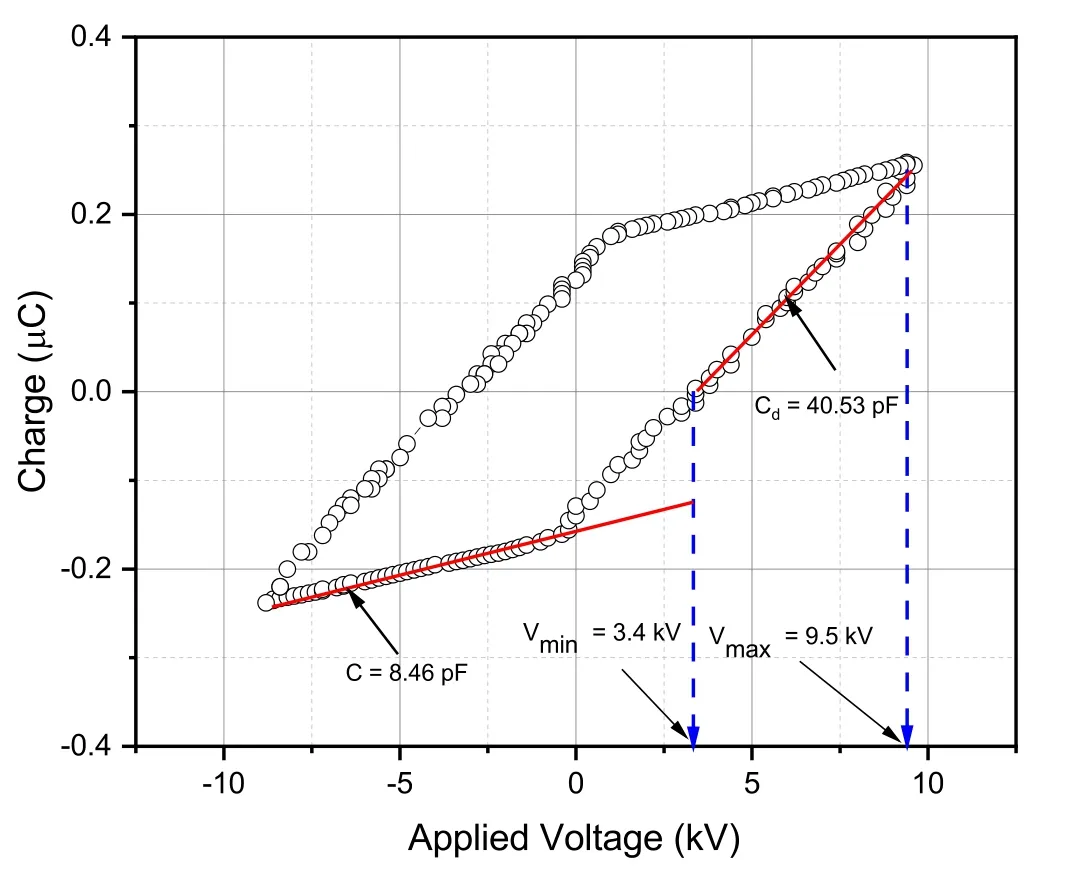
Figure 4.Q–V plot of the discharge at a frequency of 50 Hz.
Now the value of discharge voltage (VD) is estimated from the measured values ofVmin,CgandCd[40]

In our case, the value of discharge voltage was found to be 2.7 kV.Using this value, the electric field in the discharge region was found to be 17.93 kV cm−1.The value of average current is estimated to be 0.106 mA.
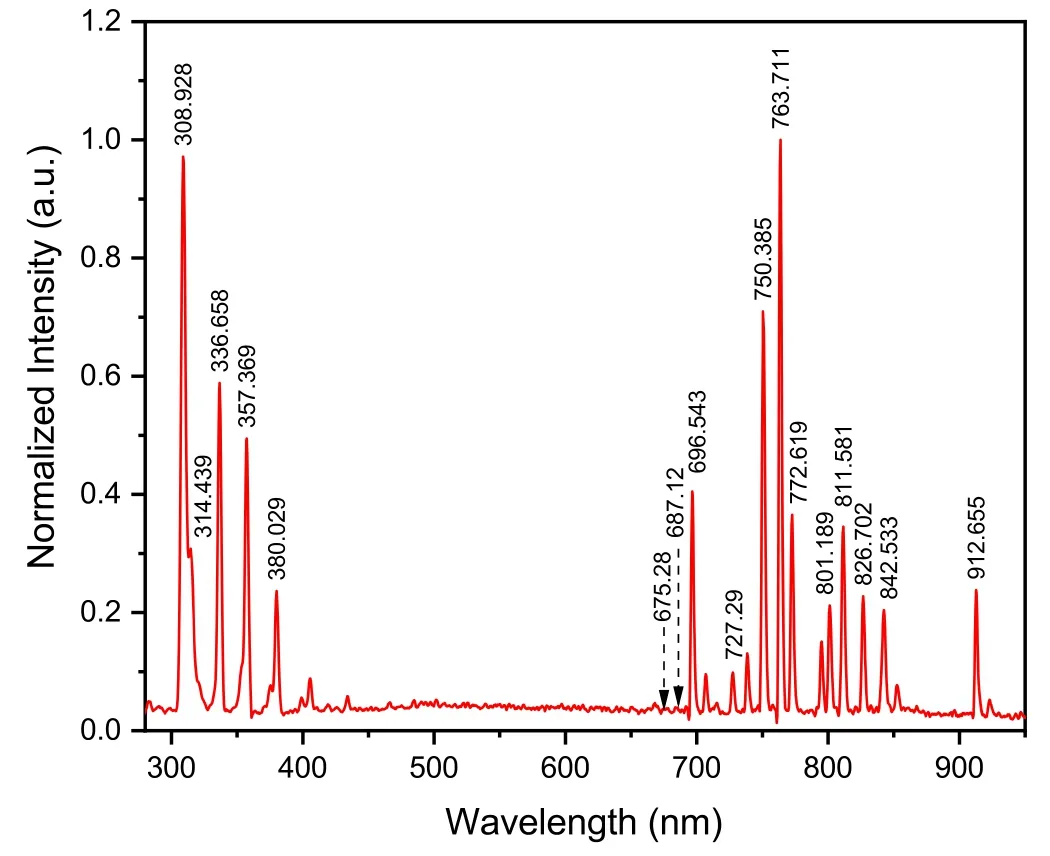
Figure 5.Optical emission spectra of the discharge in argon environment (Q) = 2 l min−1.
Now, electron density (ne) can be obtained using equation (5) [42]:

where,is the electron conduction current density,eis the electronic charge,μeis the electron mobility and, E is the electric field in the discharge region.
In this work, the electron conduction current density is 2.26 × 10−4A cm−2,the electric field (E) in the discharge region is1.793 × 104V cm−1, the electron mobility (μe)estimated form BOLSIG + is 330 cm2V−1s−1and the electronic charge (e) is1.6 ×10−19C.Using these values in equation (5), the electron density (ne) averaged over the micro-discharge filament is estimated to be2.38 × 108c m−3.
4.2.Optical characterization
Figure 5 shows the optical emission spectra of the discharge at atmospheric pressure using argon as a working gas.The emission spectrum comprises OH bands originating from the dissociation of water vapor present in the atmosphere and Ar lines in the UV and visible–NIR ranges, respectively.The spectrum also consists of bands of second positive system of N2and first negative system of N2+in the UV spectral range[43–45].Boltzmann-plot method was employed for estimating electron excitation temperatureTexc( ) [46].From the discharge spectrum,five atomic Ar lines(675.28 nm,687.12 nm,703.02 nm, 727.29 nm and 750.38 nm) [46, 47] were chosen to calculate the electron excitation temperature.

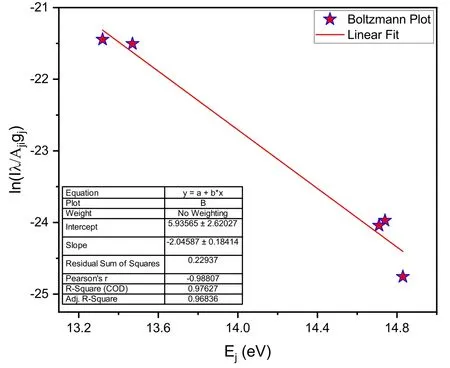
Figure 6.Boltzmann plot of Ar I line spectrum.
Here, in equation (6), the values of wavelengthλ( ) and intensityI( )are obtained from the observation,and the values of transition probability(Aji) ,statistical weight(gj) ,and energy(Ej) ,of the spectral lines, are respectively obtained from the National Institute of Standards and Technology(NIST)Atomic Spectra Database[48].Also,kBrepresents the Boltzmann constant and C is a constant.
By plotting equation(6)withEjin the horizontal axis andin the vertical axis results, we obtained the electron temperature (0.49 eV) from the slope of the Boltzmann fitted straight line as shown in figure 6.If the plasma is in local thermal equilibrium, the electron excitation temperature can be regarded as the electron temperature.The data points in the Boltzmann plot were generally well aligned and the linear fitting corresponded to a high correlation Pearson coefficient over 0.96, which suggested that the excitation equilibrium of the discharge plasma was confirmed well.
4.3.Seed temperature measurement
Twenty-five seeds in three replicates were taken in the active region of the discharge for the determination of temperature.The temperature profile of the radish seeds taken through argon DBD treatment using an infra-red thermometer is shown in figure 7.It was observed that the temperature of the seeds increased continuously by increasing the exposure time of the discharge.At 1 min of the operation time, the seed temperature closed to the surrounding temperature was(2 0.2 °C).Even the treatment time reaches 5 min, the seed temperature is as low as 25.2 °C which indicates that cold atmospheric plasma i.e.DBD presents a suitable method to enhance germination without harmful effects.
4.4.Seed water contact angle measurement
The wetting properties of the plasma-treated, and control samples of radish seeds were determined by apparent contact angle measurements using rame hart contact angle goniometer (model 200).The instrument contained a manual Hamilton precision syringe, light-emitting diode light source,and a high-resolution digital CCD camera.The apparent contact angles were measured by analyzing the captured images.Finally, the measurement was done by dropping 1 μl distilled water on the surface of seeds at room temperature using equation (7) [49].

Figure 7.Temperature profile of radish seeds after plasma treatment.

where,γvs,γls, andγvlare the interfacial tension between the solid and vapor, solid and liquid, and liquid and vapor respectively.
Here, figure 8 illustrates the contact angle of 1 μl of distilled water on control and plasma treated seeds.Measurement was repeated thrice, and the mean value of water contact angle is taken.The contact angle of the control radish seed was 107.75° ± 1.2° .On exposure of the seeds to DBD plasma for 1,2,3,4,and 5 min,the contact angle of the seed decreased to 39.7° ± 0.9° , 38.9° ± 0.8° , 37° ± 0.4° ,35° ± 0.8° , and 27.8° ± 1.3° respectively.The maximum error in the contact angle determination did not exceed °1.3 .The result showed that plasma treatment makes the seed surface hydrophilic as the water contact angle of plasmatreated seeds decreases as treatment time increases.The change in the wettability of radish seeds might give rise to a change in the water absorption(imbibition)of these seeds,as shown in figure 8.
4.5.Estimation of growth
The germination percentage is calculated using equation(8) [50]

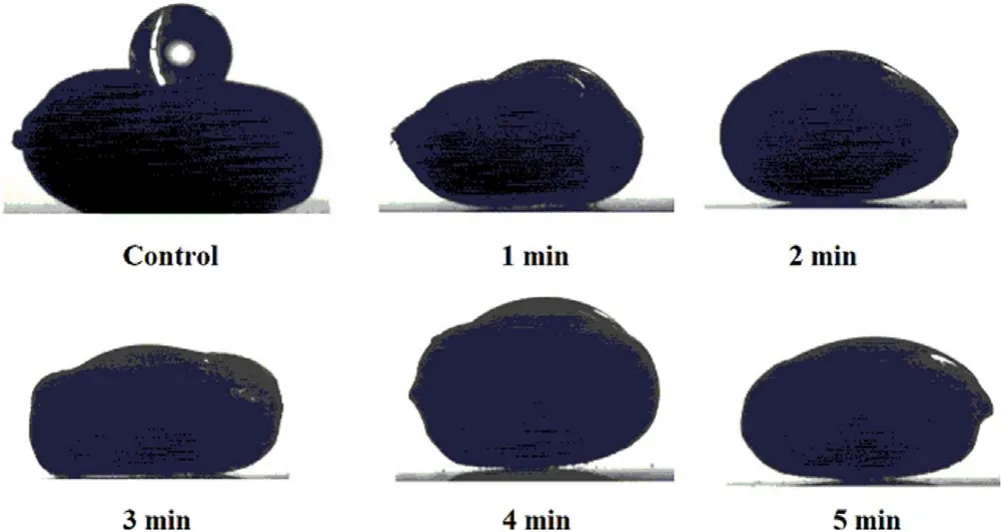
Figure 8.Wettability of control and treated seeds.
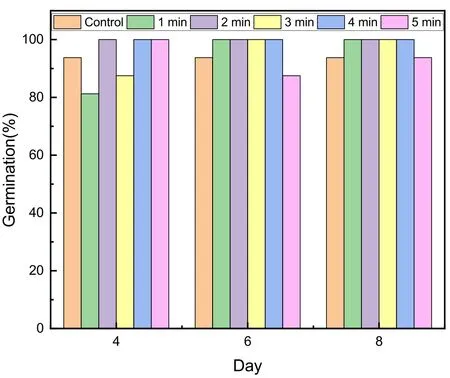
Figure 9.Effect of plasma treatment on the germination of radish.
Three replicates of 16 healthy seeds were taken on different trays and the germination rate was calculated on the 4th,6th,and 8th day.On the 4th,6th,and 8th day of germination,the plasmatreated seeds were found to have more germination potential as compared to the control seeds.From the analysis, it was seen that there was also a decrease in germination rate if the treatment time exceeds above 4 min.It was observed that the germination rate was found to be less for 1 min by 12.5%on the 4th day as compared to the control sample.However, for the 2, 3, 4, and 5 min treatment on the 4th day, the germination rate was found to be 6.25%as compared to the control seeds.Also,on the 6th and 8th day,the difference of the germination rate was 6.25%as compared to the control sample.But, on the 8th day, for 5 min treated seeds there was no significant change in the germination percentage as compared to the control seeds.
From figure 9,it is seen that there is 100%germination of the plasma-treated seeds of radish on day 6 and day 8 for 1 min, 2 min, 3 min, and 4 min.However, the germination rate(%)is found to decrease if we increase the treatment time.
4.6.Seedlings length with root
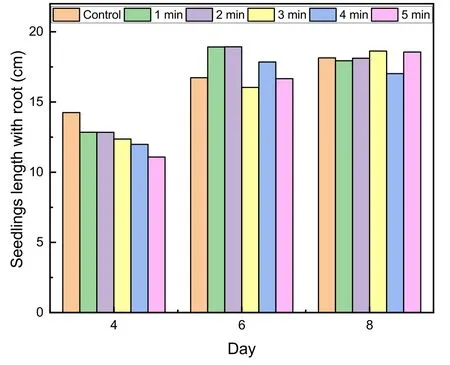
Figure 10.Effect of plasma treatment on the seedling length.
From figure 10,the seedling’s length with root is found to be more for the control sample taken on the 4th day of germination.However, as the days elapsed, the seedling’s length with root is found to be more for 3 min treated seeds by approximately 2.7% as compared to the control sample.
4.7.Seedlings length without roots
First, the seedlings were taken out from the germination tray and the cocopeat was taken out from the roots without damaging the seedlings.Then the length of the shoot of the seedlings was only measured with the help of a measuring scale.
From figure 11, it is seen that, on the 4th day of germination, the seedlings length was found to be increased by 6.74%, 1.22%, and 4.90% for 1, 2, and 3 min plasma treated seeds.However, for 4 and 5 min treatment time, the seedling’s length was found to be decreased by 7.35% and 12%respectively as compared to control (untreated) seeds.
Similarly,on the 6th day,the seedling’s length was found to be increased by 5.46%, 13.85%, 0.94%, 12.25%, and 4.71% for seeds being treated by plasma for 1 min, 2 min,3 min, 4 min, and 5 min respectively.
The length of the seedlings was also taken on the 8th day after germination.The length of the seedlings was found to be increased by 3.5%, 6.16%, 8.13%, 3.42%, and 7.96% for the plasma-treated seed as compared to the control seeds.Thus,there is an increase in the length of the seedlings without root i.e.shoot length by plasma treatment as compared to the control seedlings.
4.8.Germination percentage on day 6
The germination (%) was calculated on the 6th day of germination.From figure 12, it is seen that there is 100% germination of the seeds being treated by plasma for 1 min,2 min, 3 min, and 4 min.There is only 93.75% of the germination rate of control seeds.Also, as seen from 5 min treatment time, we can say that overexposure of seeds to plasma may result in the decrease in a germination rate of the seeds.

Figure 11.Effect of plasma treatment on the shoot length of radish.
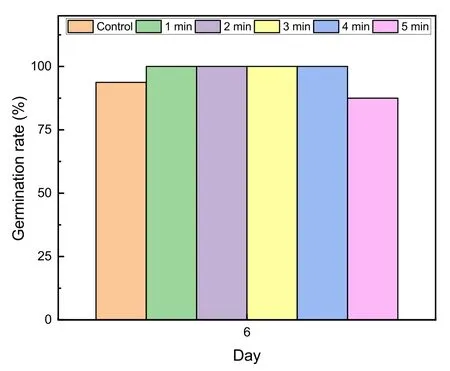
Figure 12.Effect of plasma treatment on germination taken on the 6th day of germination.
4.9.Seedlings wet weight
The seedlings were taken, and the cocopeat was removed from the roots of the seedlings.After that, 16 seedlings were weighed in an electronic balance (MG124Ai, Bel instruments).From figure 13,on the 4th day of germination,it was seen that the fresh weight of the seedlings being treated by plasma is found to decrease for 1,3,4,and 5 min by 17.37%,6%, 3.94%, 11.04% as compared to the fresh weight being taken from control seedlings.However,the wet(fresh)weight of the seedlings was found to increase for the seed being treated for 2 min by 8.58% as compared to the control one.However,as the day elapsed,the fresh weight of the seedlings was found to increase.
Similarly, on the 6th day, the seedling’s wet weight was again measured.It was noticed that there was an increase in the seedling wet weight for 2 min plasma treated seeds by 6.23% as compared to control seedlings.However, for the seed being treated for 1, 3, 4, and 5 min the seedling’s wet/fresh weight was found to be decreased by 18.71%, 15.09%,6.63%, and 14.48% respectively as compared to the control seedlings.
Also, the fresh weight was further taken on the 8th day after germination.And it was noticed that there is a significant increase in the fresh weight of plasma-treated seeds.As compared to weight taken from fresh seedlings,the seedling’s fresh weight was found to be increased by 13.88%, 8.94%,5.64%,10.35%,and 12.94%for seeds being treated for 1 min,2 min, 3 min, 4 min, and 5 min respectively.

Figure 13.Fresh weight of radish seedlings after plasma irradiation.
4.10.Dry weight of the seedlings
The seedlings were taken out from the germination tray box and the cocopeat was removed from the roots of the seedlings.After that, 16 seedlings were dried in an oven at 50 °C and were weighed in a weighing balance (MG124Ai, Bel instruments).As compared to the dry weight taken from normal(control) seedlings on the 4th day of germination, the dry weight of the seedlings was found to be decreased by 33.33%,3.33%,23.33%,10%,and 16.66%for the seeds being treated for 1 min, 2 min, 3 min, 4 min, and 5 min respectively as shown in figure 14.
Similarly, the dry weight was also measured on the 6th day after germination, and it was also noticed that the dry weight of the control seedlings was more as compared to treated seedlings (1, 2, 3, 4, and 5 min) by 0.30%, 17.24%,20.00%, 21.08%, and 16.67% respectively.However, on the 8th day,the dry weight of the treated seedlings for 1,2, 3,4,and 5 min was found to increase by 3.60%, 5.87%, 5.68%,5.16%, and 10.32% respectively as compared to the control seedlings.
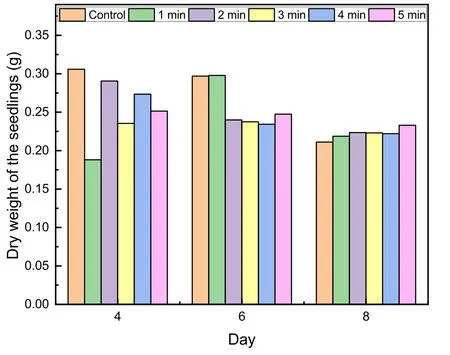
Figure 14.Dry weight of radish seedlings after plasma irradiation.
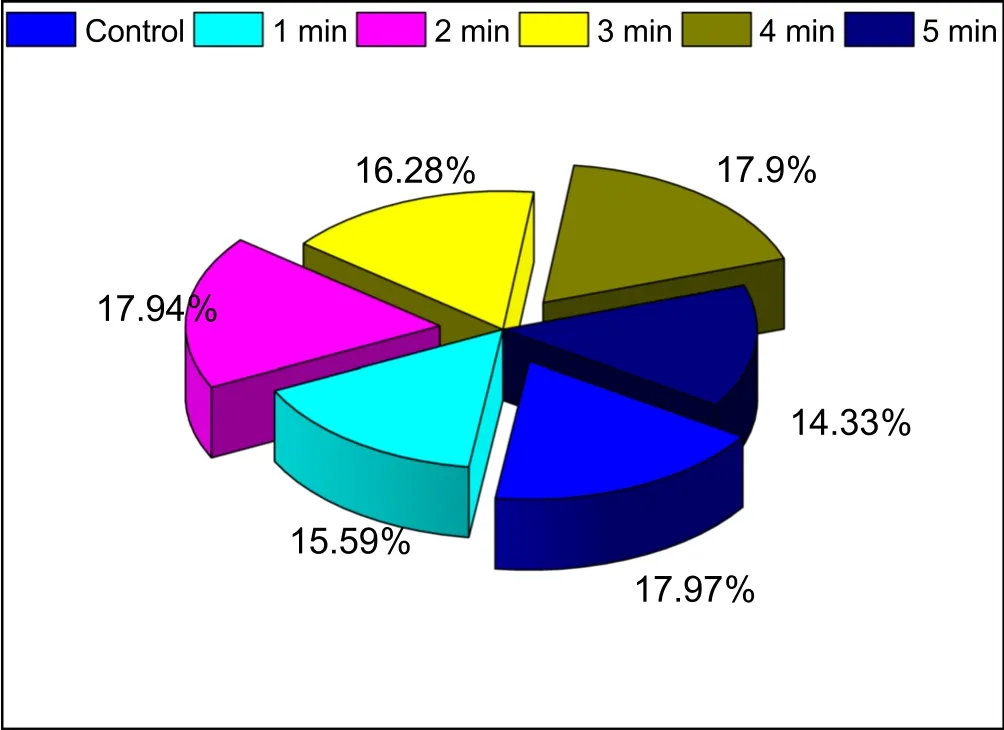
Figure 15.Cumulative production rate of radish seedlings after plasma treatment.
4.11.Estimation of production rate
The cumulative production rate was calculated on the 6th day of germination.For the estimation of production rate, the average weight of the seedlings and the average seed weight were taken.The cumulative production rate was calculated using equation (9) [51]

From figure 15,it is clear that the cumulative production rate was found to be decreased in the case of plasma-treated seeds (1 min, 2 min, 3 min, 4 min, 5 min) by 13.23%, 0.19%,9.39%, 0.38%, 20.26% respectively.
4.12.Estimation of the vigor index
The sum of those properties of the seed that determines the potential level of activity and performance of the seed during germination and seedling emergence is known as seed vigor[52].The vigor of seedlings was calculated after calculation of the seed germination and seedlings growth using equation (10) [53]
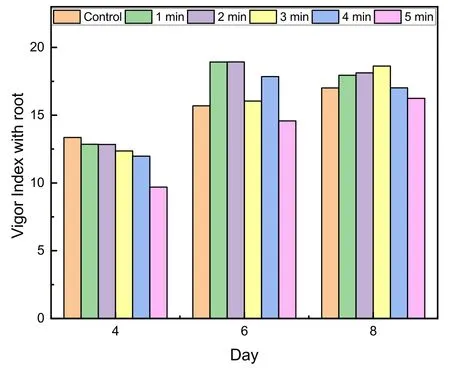
Figure 16.Vigor Index I (with root) of control and plasma-treated seedlings.

From figure 16, we noticed that the Vigor Index I (VI I)was not stimulated by plasma treatment on the 4th day of germination.However, on the 6th day of germination, VI I was stimulated by plasma treatments.The VI I of treated seeds for 1, 2, 3, and 4 min increment was 1.02–1.23 compared with the control seeds.Here, on increasing the treatment time,the VI I was found to be decreased as compared to normal seeds.Similarly, VI I was also calculated on the 8th day of germination.It was noticed that VI I of plasma-treated seed was found to be increased by 0.01–1.61 as compared to control seeds.This increment positively correlates with the seedling length and fresh weight, which agrees with the results documented by many researchers.The changes in germination and early seedling growth observed in the experiment might be explained by the stimulation of certain natural signals, hormones, and enzyme activities [20, 51].
The seedlings were taken,and the roots were detached from it.Then the VI I was studied.From figure 17,Vigor Index I of the seeds was triggered by plasma treatment.As calculated on the 4th day of germination,the VI I increased by 13.72%,7.84%and 11.89% for 1 min, 2 min and 3 min treated seeds than normal seeds.However, the VI I decreased for 4 min, and 5 min treated seeds by 1.17% and 18.03% respectively.
Similarly,vigor index I was calculated on the 6th day of germination, and it was found that VI I was found to be increased in case of plasma treatment seeds for 1, 2, 3, and 4 min by 12.51%, 21.52%, 5.63%, and 19.71% respectively.However, the seed being treated for 5 min shows a slight reduction of the vigor by 2.51% as compared to the control sample.
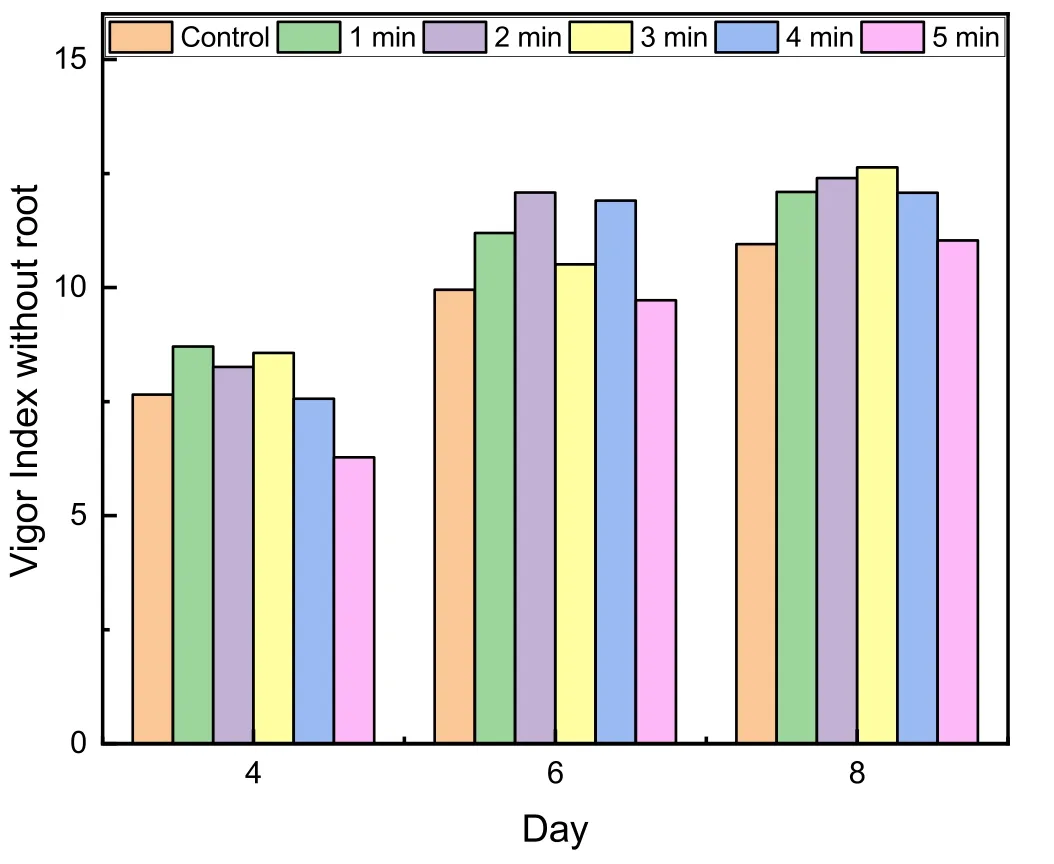
Figure 17.Vigor Index I(without root)of control and plasma-treated seedlings.
Further, from the calculation on the 8th day of germination,it was found that the vigor was significantly increased in all treatment times.It was noticed that the vigor index increased by 10.43%, 13.24%, 15.34%, 10.27%, and 0.73%than the control seeds for 1 min, 2 min, 3 min, 4 min, and 5 min respectively.From the above results, we can conclude that vigor index I was stimulated by plasma treatment.
From figures 16 and 17, the VI I is found to increase with the increase in treatment time.However,the vigor index is found to decrease as the treatment time increases beyond 4 min.
Vigor index II (VI II) was also estimated using equation (11) [54]

From figure 18, it is noticed that no significant differences were observed between treatment and control seedlings in VI II.This is due to the absence of modification in the total dry weight of seedlings.
4.13.Determination of EC
The EC test is one of the promising methods to determine vigor loss in seeds.The relative electrolyte leakage from the apoplastic or protoplast space of the seed was accessed by determining the EC using equation (12) [53]

In a flask containing 250 ml of distilled water, three replicates of 30 seeds were weighed and soaked.After 24 h at 25 °C, the measurements were taken employing a portable conductivity meter(HI-2030 edge Hybrid Multiparameter EC Meter).
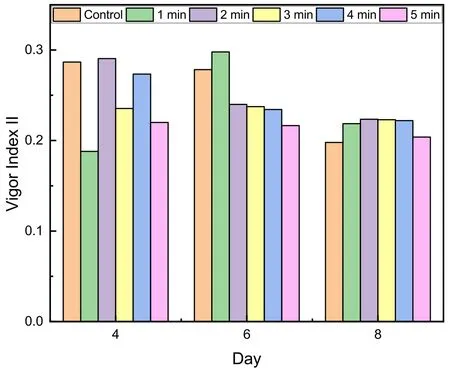
Figure 18.Vigor Index II of control and plasma-treated seedlings.
From figure 19, it can be seen that the EC was found to be decreased by 17.91%, 27.17%, 35.78%, 14.83%, and 44.58%for 1 min,2 min,3 min,4 min,and 5 min treated seed than the control seed.The lower the EC number, the better it signifies less leaching of solutes and a higher vigor.Hence,we can observe on increasing the vigor index, the plasma treatment of seeds has a positive impact on it.
4.14.Estimation of total chlorophyll content and carotenoids
Chlorophyll-a, the most well-known pigment, converts light energy into chemical energy.Similarly, chlorophyll-b as accessory pigment acts indirectly in photosynthesis by transferring the light it absorbs to chlorophyll-a.The chlorophyll molecule has Mg2+at its center which has ionic,hydrophilic and hydrophobic nature with a carbonyl group at its tail which makes it polar.It occurs in the plant cell within a water-soluble chlorophyll-binding protein (WSCP).A functional group (i.e.–CHO) differs chlorophyll-a and chlorophyll-b bounded to the porphyrin ring.Due to its carbonyl group, the porphyrin ring is more soluble than chlorophyll-a in polar solvents [55].
Carotenoids are pigments in plants which are in chromoplast.It includes photosystem-I (760 nm) and photosystem-II (680 nm).Carotene is the most important photosynthetic pigment as they were useful in the prevention of chlorophyll and thylakoid membrane from the damage of absorbed energy by peroxidation [56].
In this study, about 0.5 g of fresh plant leaf sample was taken and homogenized in tissue homogenizer with 10 ml of 95% ethanol.Homogenized sample mixture was centrifuge for 10 000 rpm for 5 min at 4 °C.0.5 ml of separated supernatant was mixed with 4.5 ml of the respective solvent.The solution mixture was analyzed for chlorophyll-a,chlorophyllb, and carotenoids content in a spectrophotometer (Parkin).The equation used for the quantification of chlorophyll-a,chlorophyll-b, and carotenoids by ethanol is given in equations (13)–(15) [57]; and spectral absorbance for chlorophyll-a, chlorophyll-b, and carotenoids by using ethanol is represented in table 1.
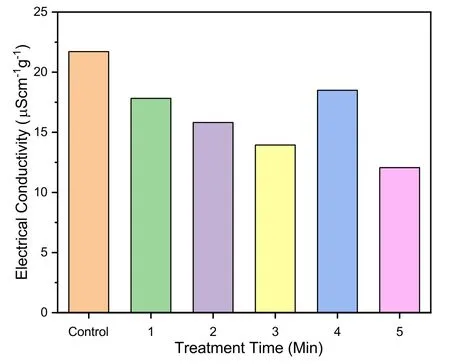
Figure 19.Effect of plasma on the electrical conductivity of leaching solution.
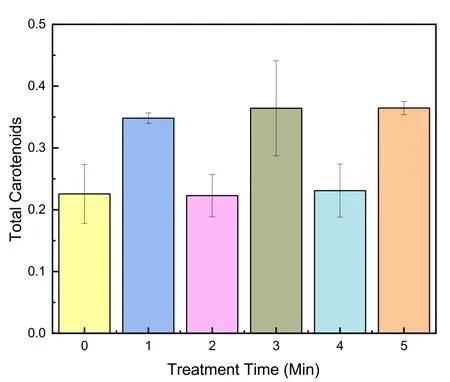
Figure 20.Average concentrations(μg ml−1)of carotenoid in radish.
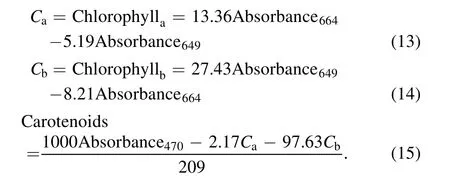
From figure 20, it is noticed that plasma treatment alters the total carotenoids contents.It has been reported by many researchers that carotenoid content is improved with application of cold plasma,and the change in the carotenoids content is also proportional to flow rate of gas used during treatment[58].In our case,there is a slight difference in the carotenoid’s contents between the control and plasma treated seedlings.Wefound an increase in carotenoid contents in 1,3 and 5 min and almost no change in control, 2 and 4 min.The yellow color pigment of the leaves showing carotenoids shows inverse relation to total chlorophyll content as shown in figure 21.This change in the carotenoid content might be due to the fluctuation of the flow rate of gas used during plasma treatment.

Table 1.Spectrophotometric determination of absorbance for chlorophyll-a, chlorophyll-b, and carotenoids with extracting solvent 95%ethanol.

Figure 21.Average concentrations (μg ml−1) of chlorophyll-a,chlorophyll-b and total chlorophyll in radish.
Similarly, from figure 21, it is seen that chlorophyll-a was found to be increased slightly by plasma treatment,however, chlorophyll-b is decreased by plasma treatment.Similarly, in the case of seedlings germinated from plasmatreated seed, total chlorophyll is found to decrease.As the health implication of carotenoids is already reported in various research, the increase in carotenoids content with the plasma treatment time suggests that plasma may be useful in enhancing the health benefits of agricultural products [59].
4.15.Estimation of mass loss due to plasma treatment
The degree of degradation was evaluated by mass loss (W),calculated by using equation (16) [60]

where,W0is the initial mass of the seed,andWtrepresents the mass of the seed at time t.
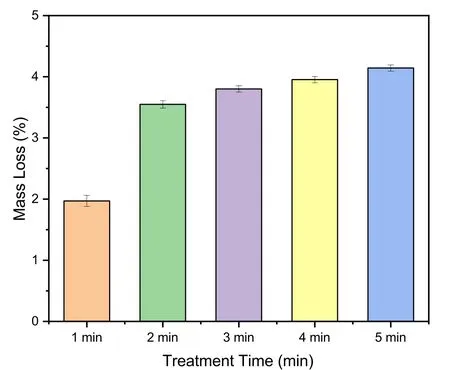
Figure 22.Estimation of mass loss of radish seeds due to plasma treatment.
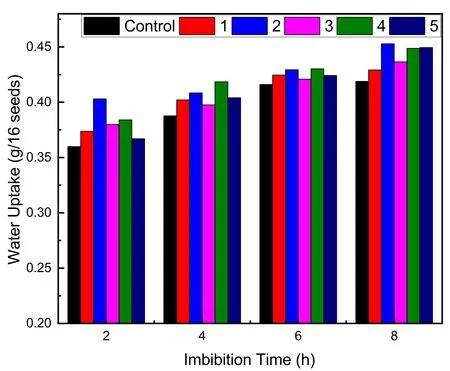
Figure 23.Wettability of control and treated seeds through 8 h soaked in a distilled water.
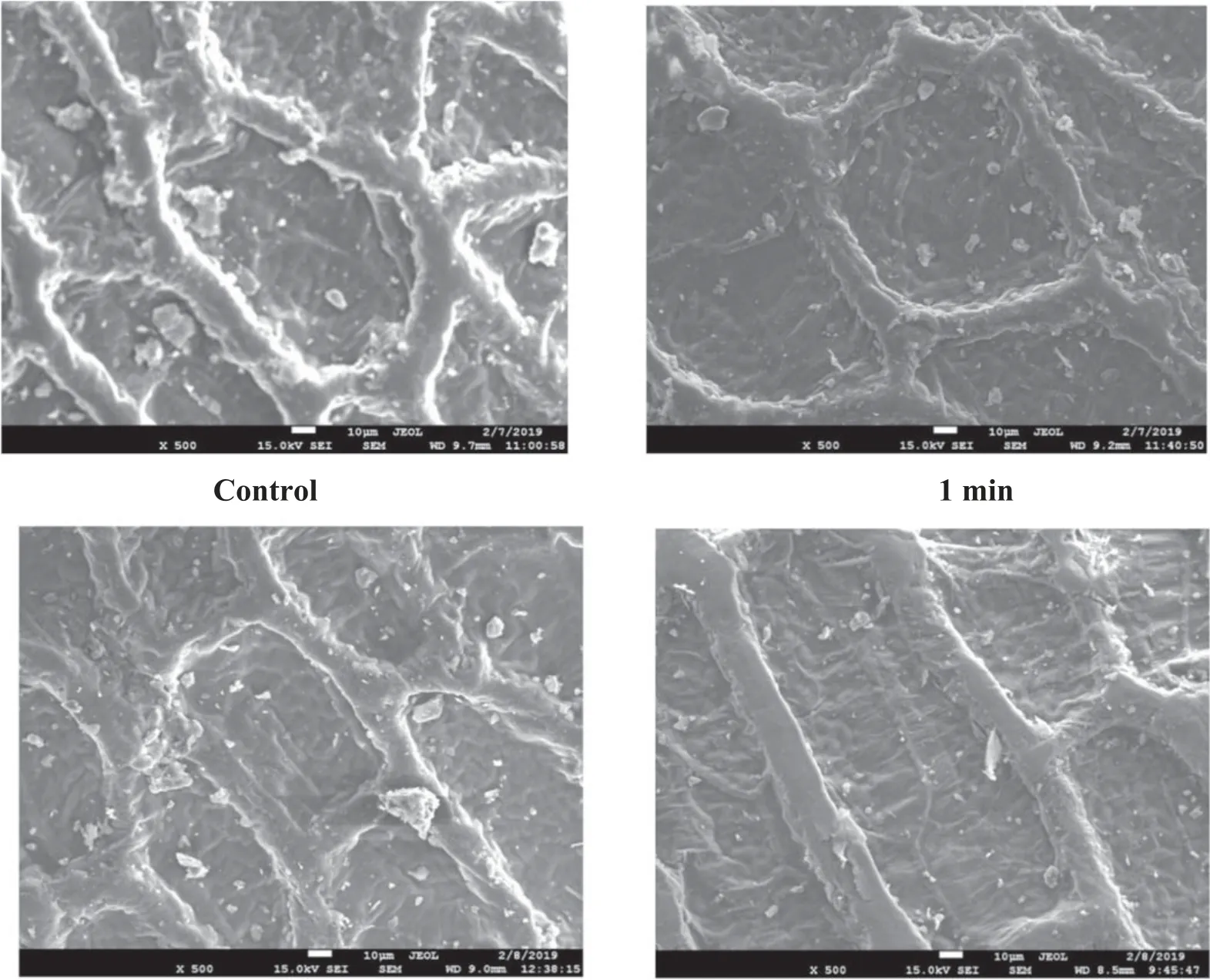
Figure 24.SEM micrograph of control and plasma treated seeds.
It can be seen from figure 22 that for the control,1,2,3,4, and 5 min treatment for 16 seeds, the average dry loss in the mass of radish seed is 0 g, 0.019 702 g, 0.035 489 g,0.038 015 g, 0.039 53 g, and 0.041 425 g respectively.The highest mass loss was observed for 5 min treatment and the difference among the treatment was observed significantly.Here, the decrease in the mass of the treated radish might be due to the desiccation of the seed coat by plasma treatment.By the measurement of contact angle and SEM analysis of the control and plasma treated seeds, the surface roughness can also be observed.
4.16.Wet weight of seeds
Seeds were exposed to low-temperature plasma for 0(control sample),1,2,3,4,and 5 min.16 seeds for one variant in three repetitions were used.Then the seeds were weighed in an electronic balance (MG124Ai, Bel instruments) immediately after the plasma treatment (t)and then in 2 h intervals (t+2,t+4, t+6, t+8).
The wettability of the treated and untreated seeds was calculated using equation (17) [61].

wheremorepresents the mass of the seeds before soaked in water andmirepresents the mass after soaked in water.
The result from the experiment indicates an acceleration in the water uptake of the radish seeds by plasma treatment.It was shown that the higher and more intensive water uptake positively correlates with the increasing exposure time of lowtemperature plasma.In the case of 2 min, the most striking difference was visible after 8 h, when the seed absorbed 8.09%water compared to the control as in figure 23.
4.17.SEM image of seeds
Figure 24 shows SEM micrograph of control and radish seeds treated by low-temperature plasma for 1, 2, and 3 min.A scanning electron microscope(JEOL JSM-7001F)was used for the study of surface morphology.The surface of the control seed of radish is relatively smoother than that of the treated one.The enhancement in surface roughness of the seed coat could have been caused by the excited particles from the discharge plasma,thus resulting in a smaller contact angle.Due to non-thermal plasma treatment, seeds undergo low stress through plasma activation.Because of this,plasma can induce a soft roughening on the surface via ion bombardment or even enrich the seed coat with polar functional groups [62].So, surface wettability is significantly improved leading to accelerated water uptake which has beneficial impact on seed germination, as well as surface permeability for nutrients [3, 53, 63].
5.Conclusion
In the study,we found that the cold atmospheric plasma treatment on radish seed produces a suitable method to enhance germination without harmful effects.Our research shows that the plasmatreated seeds were found to have more germination potential as compared to control seeds.But the germination percentage was found to be decreased if we increase the treatment time.Similarly,there was an increase in the length of the seedlings with and without roots by plasma treatment as compared to the control seedlings.It was observed that there was a significant increase in the fresh and dry weight of seedlings grown from plasma-treated seeds.In the same way, spectrophotometric determination revealed that chlorophyll-a was found to be increased slightly by plasma treatment however chlorophyll-b was decreased by plasma treatment.But in the case of seedlings germinated from plasmatreated seed,total chlorophyll was found to decrease.Also,it was noticed that plasma treatment changes the total carotenoids contents.The results showed that plasma treated seeds soaked in distilled water had lower EC than control seeds.We noticed a positive change in the vigor index of the plasma-treated seeds/seedlings as compared to control seedlings.Similarly, it was observed that the temperature of the seeds increased continuously by increasing the exposure time of the discharge.However, the cumulative production rate was found to be decreased here.The surface morphology measurements revealed that the roughness of the plasma-treated seed increases with an increase in treatment time.The decrease in water contact angle on the treated seed can be ascribed to the incorporation of the polar functional groups produced after treatment.Results from the experiment indicate an acceleration in the water uptake of the radish seeds and make the seed surface hydrophilic by plasma treatment.We observed the highest mass loss in 5 min treatment and the difference among the treatment were observed significant.Based on these findings,plasma treatment has shown the highest potential in the commercial use of plasma agriculture.
Acknowledgments
The authors are very thankful to Prof Dr Eun Ha Choi,and Dr Bhagirath Ghimire (Kwangwoon University, Korea), Milan Simek (Institute of Plasma Physics, The Czech Academy of Sciences), and Dr Johannes Gruenwald (Gruenwald Laboratories)for their valuable help and support.The corresponding author would also like to thank Nepal Academy of Science and Technology (NAST), Khumaltar, Lalitpur, Nepal for providing financial and technical support.The authors are also grateful to all the researchers of the Department of Physics, Kathmandu University who provided valuable suggestions for the completion of this work.
ORCID iDs
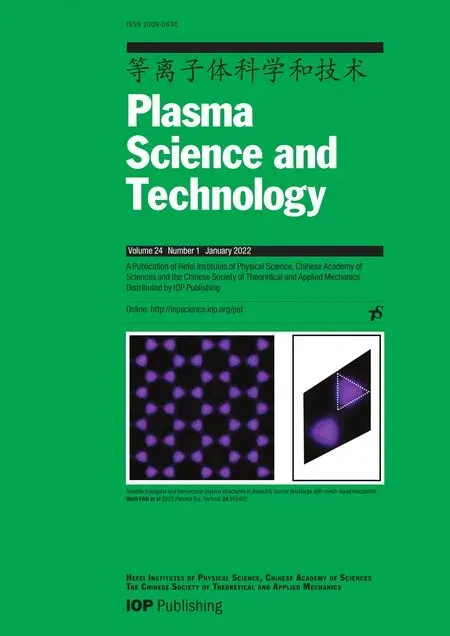 Plasma Science and Technology2022年1期
Plasma Science and Technology2022年1期
- Plasma Science and Technology的其它文章
- Design of improved compact decoupler based on adjustable capacitor for EASTICRF antenna
- W fuzz layers: very high resistance to sputtering under fusion-relevant He+irradiations
- Discharge and post-explosion behaviors of electrical explosion of conductors from a single wire to planar wire array
- Influence of anode temperature on ignition performance of the IRIT4-2D iodine-fueled radio frequency ion thruster
- Experimental study on plasma actuation characteristics of nanosecond pulsed dielectric barrier discharge
- A novel double dielectric barrier discharge reactor with high field emission and secondary electron emission for toluene abatement
